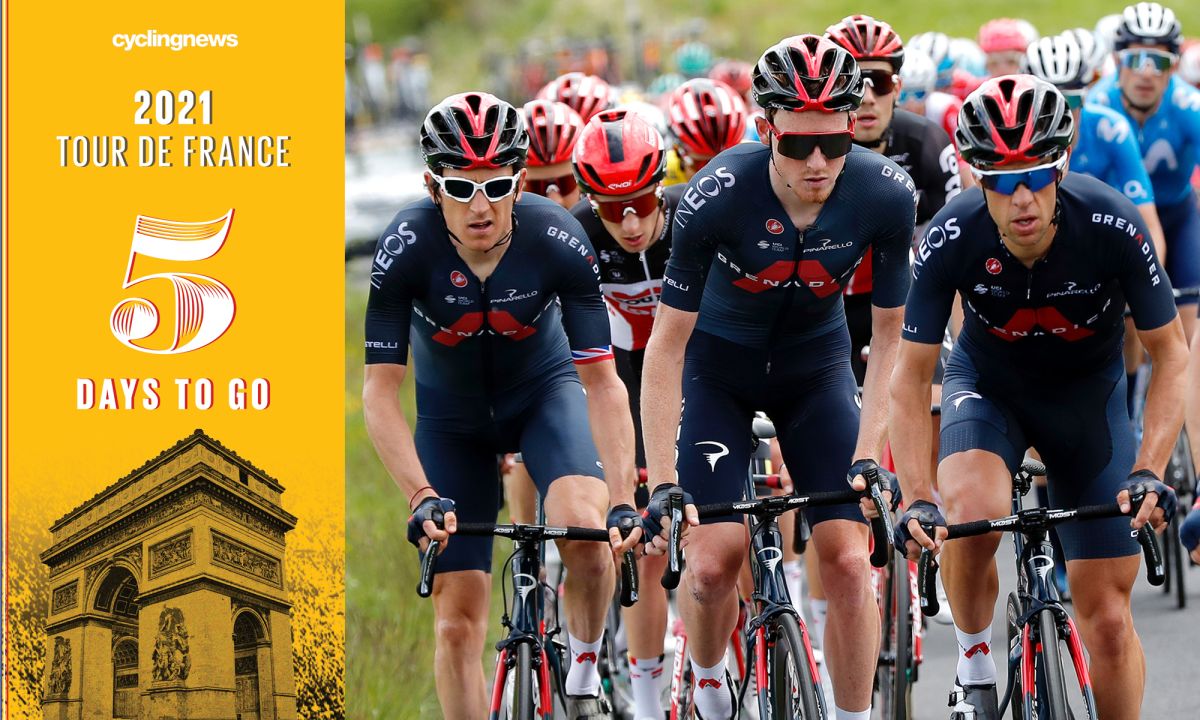Ahead of last year’s Tour de France, the Ineos Grenadiers team appeared to be in disarray.
There is no major weakness, while their depth in the mountains and on the flats is second to none.
Perhaps it’s telling that Ineos haven’t nailed their colours to one particular mast and that there are protected roles for at least two riders in the team.
The route certainly favours Thomas, with two decent length time trials and a team that looks well-positioned to exploit weaknesses in their rivals during any of the crosswind stages.
Whether the former Tour winner has the power in the mountains to match Primož Roglič and Tadej Pogačar remains to be seen but Ineos will have to rely on their collective strength no matter who they anoint as their leader.
At the very least, he’ll be one of if not the best mountain domestique in the race but, as he demonstrated in the Dauphiné – and most of the season to be fair – he has matched his consistency of old and blended it with a new, more relaxed and collected attitude towards racing.
The most likely scenario, however, is that the team utilizes Porte as a mountain domestique, with the Australian either defending the team or launching moves in a bid to isolate their rivals.
On paper, Carapaz is arguably Ineos’ best hope when it comes to challenging Roglič and Pogačar in the mountains, while his anticipation and stealth were two key factors in winning the Giro d’Italia two years ago.
It’s also not impossible to imagine a scenario in which the Slovenian favourites watch each other and mark themselves out of contention – just like Roglič did at the 2019 Giro.
After his highly surprising win in the Giro d’Italia last year, the Londoner has been ushered into the inner sanctum of Dave Brailsford’s Tour de France squad.
He looks well equipped for a Tour de France debut and although the precise nature of his role looks fairly clear cut, it will be interesting to see how deep he can go and whether he can out-climb some of the more established and experienced riders on this list.
It’s no coincidence that the former world champion has made every Tour selection bar one since his arrival on the team in 2016.
He also exudes calmness and experience and, what’s more, he can work just as well on the flats as he can in the high mountains.
He knows when to bring his leader to the front on the flat, he can work all day at the head of the peloton when called upon, and his prowess in the medium mountains makes a huge difference later in the race.
This year, Rowe could have an even bigger workload on his shoulders with the opening week through Brittany littered with pitfalls for the GC contenders.
Van Baarle probably doesn’t get the credit he deserves but, like Kwiatkowski, he can provide cover in a multitude of areas, while his climbing improvements over the last few seasons continue to go unchecked.
That shouldn’t be an issue – he has a proven pedigree for going back-to-back in Grand Tours and was even pulled from the Tour de France in the third week of last year’s race in order to prepare for the Giro.
Sign up to the Cyclingnews Newsletter.
